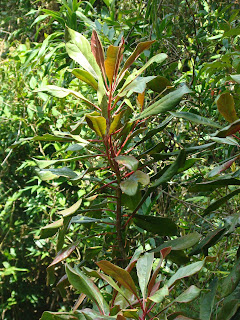


Thus far, my voyages had been mainly in the Eastern rainforests of the country. Now, I was in the North, a far drier and more mountainous area. (Drier is a relative term. As it stands, the north gets plenty of water. However, nearly all of it (64 inches out of a total 74) falls between December and March. So in fact, the north it both the wettest (by volume) and driest (by length of arid season) place in the country.) Thus, the parks up here were more succulent and rock-formation heavy. The king of said parks is by far the one in Ankarana, just a few hours by taxi-brusse south from Diego.
I spent a couple days just outside the park (not so much a town as a store and some huts), in a lovely little bungalow that featured its own bizarre insect life. Meanwhile, the park itself was incredible, the highlight being the tsingy (rock formations) which are giant limestone peaks that have been eroded (due to the vehemence/ph of the rain and the softness of the limestone) into millions of tiny pinnacles, fields of which stretch out as far as the eye can see. The pictures don’t quite do it justice, but I’ve tried to get a few vantages up here.


There was also some great vegetation, including a little red, coral-like plant that is only found on the tsingy. Also posted is the vazah (the Malagasy equivalent of “goyim”) tree, so named because it “peels just like a vazah when it’s hot;” a couple interesting/alien succulents; some massive mangrove-y trees; and my first baobab. There are something like 11 species of baobabs on earth, and 7 of them are endemic to Madagascar.












And no park post would be complete without a few lemurs. The little “sentinel,” as my guide called him, is a nocturnal lemur called the sportive lemur (I would see many more in action a month down the road), while the active fellows (with baby) are a type of crowned lemur. I saw the couple kiss, but, when I’d taken the picture, I saw it was of a different bodily function… Other interesting finds were a bizarre bat-cave that was noisy and smelly and all-around terrifying, especially because there were human bones lying around (from a group of locals who hid out in the cave during a tribal war – they were subsequently canonized (“ “), hence the money and the rules forbidding the eating of pork and the having of sex inside the cave).








The odd-colored blue water is also from the cave, and has been there since the previous year. I also saw a few tenerecs, which are like big hedgehogs, but tastier, and nice birds.






My favorite creatures, though, were the small, white-tufted insects that I found crawling around a tree. The cockatoo-esque tuft is designed to be removed by birds of prey so that the insect will survive (its first) avian attack.























